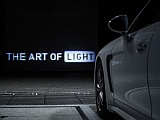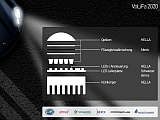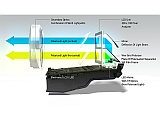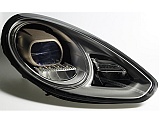- Login
- LOGIN-AREA
- Aftermarket Club
- Deutsch
Technology & Products / 27.06.2017
New Headlamp Dimension: Liquid Crystal HD Technology Enables Fully Adaptive Light Distribution in Real Time
- Integration of a Liquid Crystal Display (LCD) in an LED headlamp opens up new paths for automotive lighting technology
- So-called LCD headlamps adjust light distribution to different traffic situations in an intelligent and continuous manner in real time
- 30,000 pixels allow image projections in addition to fully adaptive light distribution
07/10/2017
07/10/2017
Overall, the new LCD headlamp projects 30,000 pixels onto the road. This allows adjusting the light pattern in an intelligent and continuous manner to various driving situations in real time. "The use of an LC display is a further step towards digitalizing lighting", says Christian Schmidt, Head of Lighting Technology Pre-Development at HELLA. This means: the adaptation of the light pattern will increasingly be determined by software. The driver will obtain the best possible view of the road. Individual segments with e.g. other traffic participants or strongly reflecting street signs can be omitted or dimmed in a targeted manner. Highly complex functions are also conceivable: navigation arrows or lines showing the ideal lane can be projected onto the road. "LCD technology enables functions that will also be relevant to autonomous driving", says Christian Schmidt. "We will therefore make the technology fit for serial production."
The LC display is the headlamp's key component. It is situated between the LED light source and the projection lens. The display generates a matrix with 100 x 300 pixels that can be individually controlled and dimmed. A camera installed in the vehicle as well as a sensor optically reading distances and speeds (light detection and ranging sensor LiDAR), will forward the ambient information to the headlamp control unit via a processor. This will then direct the individual display pixels up to 60 times per second. 25 high-power LED's arranged in three rows will serve as light source. Each LED's light intensity will be adjusted to the respective lighting situation.
HELLA developed the concept for the LCD headlamp's optical system during the research project. The system requirements of automobile manufacturer Porsche and the Research Institute for Lighting Technology and Mechatronics of the University of Paderborn (L-LAB) served as foundation. Ensuring high system efficiency and a thermal concept guaranteeing the automotive suitability of the module were among the various HELLA tasks. A special liquid crystal was required here, which Merck developed for this purpose. Using this chemical component, the IGM of Stuttgart University developed and built prototype displays. Elmos Semiconductor designed and built innovative electronic semiconductor components, which Schweizer Electronic embedded into the BCP in a completely novel manner("Embedding"). This technology allowed the experts realizing a reliable, efficient and space-efficient control of the LED lighting unit. HELLA provided the integration of the various components into the overall system and developed an interface between lighting control and headlamp. A prototype resulted, which -- integrated into a Porsche Panamera - is currently being tested under realistic driving conditions by test drivers at the University of Paderborn.
Due to increasing traffic volumes and safety requirements, intelligent lighting systems are of increasing importance. LCD technology enables completely new functionalities and opportunities here. And the use is not limited to passenger cars. Other vehicle categories, such as commercial vehicles or buses also provide meaningful application areas.
2017
Contact
Dr. Markus Richter
Company Spokesman
Rixbecker Str. 75
59552 Lippstadt, Germany
Tel.: +49 2941 38-7545
Fax: +49 2941 38-477545
Markus.Richter@hella.com
Company Spokesman
Rixbecker Str. 75
59552 Lippstadt, Germany
Tel.: +49 2941 38-7545
Fax: +49 2941 38-477545
Markus.Richter@hella.com
07/10/2017






